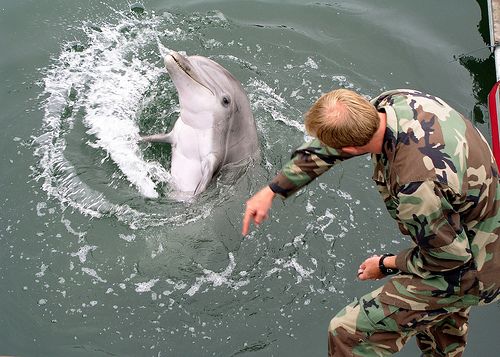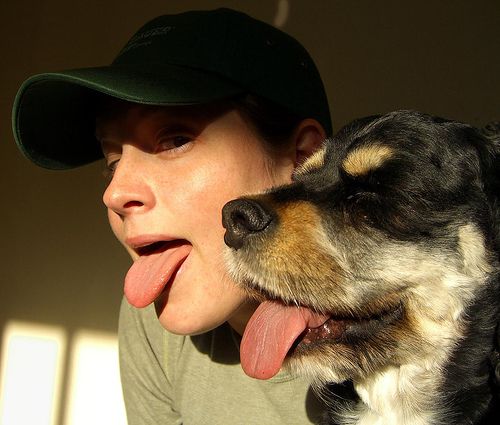Behavior Training Buddies?
Today I had the pleasure of a long talk about training with another animal professional who was my college buddy at one of the animal behavior training programs I graduated from.
We’ve kept in touch on and off through the years and he is one of the few people I can get really get into the nitty gritty discussions about behavior & training.
He trained dolphins in the open ocean for about twenty years but today works with dogs and is actually studying to enter into a new career.
Over the years we have passionately discussed our most difficult cases, our frustrations and our successes.
This most recent conversation blossomed when he asked me about a particular challenge and I began asking questions.
Later he said, “It is such a pleasure talking to another trainer who gets it. Most others just jump in with recommendations or advice–but you get it.”
Most people want answers, but to get the answers, you have to ask questions.
You see, in order to solve an animal behavior training problem, it involves much more than just giving a pat answer to solve the problem because you are dealing with a living creature. Things are a bit more involved than a quick fix.
In ideal situations it is necessary to assess the animal, the environment, the trainer(s), the animal’s history and the social environment.
However, since I’ve been in my career with animals for so long, I’ve found that if I can get my questions answered, I don’t always have to be onsite.
Now, when I say that it is more involved that a quick fix, I am not saying that some problems cannot be solved quickly, but to really extinguish a problem and prevent it from escalating (or coming back), it is a more involved process.
Some people miss the art of animal training while others miss the science of animal training.
Then there are those that cling tightly to the science of it and believe that it is all the same.
Hogwash. The reality is that it is a blend of art and science.
Anyway, we eventually got to discussing the differences between skilled trainers and those who aspire to be.
This came up because his case involved someone who had been around a lot of animals for a long, long time.
Plus, during this time she has been training dogs. However, despite her extensive time investment and work with a large number of animals, she still is not very sophisticated and sadly, not too savvy about training.
Now I pondered over this before in the lens people see animals through but just why most people cannot identify the nuances of animal communication is a mystery to both of us.
Part of this is due to the fact that we have been in the field for so long, but the big quandary is over why so many “professionals” don’t get it either.
So just what is it that makes some people better than others in their chosen field?
- Is it aptitude?
- Is it passion fueled motivation to acquire the skills?
- Is it something that can be learned?
- Is it sheer numbers of animals trained?
- Is it diversity of species or breeds trained?
It would be great if those questions could be answered, yes. Sadly, that is not the case.
Some trainers get attached to specific tools or methodologies and cling tightly to them rather than experiment and progress.
Others find some new marketing angle and introduce it as something new, but truth be told, I have not seen much new in the animal training field for quite some time.
Most people cannot distinguish between a trainer who is great and someone who is simply adequate.
Anyway, here is a formula I was given just last week:
Talent + Knowledge + Experience = Proficiency (aka Skill or Strength)
It reminded me of something I often say, “Anyone can train but not everyone has talent…”
In any case, that is what I think gives someone an edge over others.
Now I’ve written my thoughts on some of this before, so you might also like to read how animal training is like piano playing, but I want to ask you, What makes one trainer good and another great?
Please share your opinion in the comments.
Photo Credit: Marion Doss



